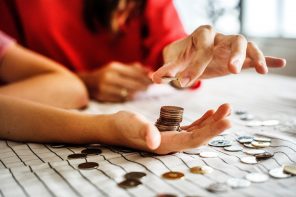A sprawling green meadow under a clear blue sky where the cotton-like clouds float jubilantly to the chattering of a free-willed brook; the blades of grass are moist from last night’s dew and you are but a passive soul, absorbing the poetry called nature.
Art takes nature as its model
-Aristotle
It doesn’t take a 4th century BCE philosopher’s quote to remind us how nature has always been an artist’s muse. But for Hillary Waters Fayle, nature is not just her inspiration, it is her canvas too. Through her magnificent artwork, she attempts to explore human connection to the natural world. Leaves, seedpods, branches, feathers- you name it, Hillary has worked with all of them. Creating fragile yet intricate patterns on natural objects showcases her desire of binding nature with the human touch.
I could go on and on about Hillary and her breathtaking projects, but its time for her words to usher you into her realm of nature and art.
Q.Tell us a little more about yourself! What is Hillary Waters Fayle like, not as an artist but as a person?
I’m a fairly quiet person, and I dislike being the centre of attention. It’s really important for me to be the best person I can be for the people and the world around me. I feel the best when I’m being really productive and I’m getting lots done and I’m able to be mentally present and engaged. I love making lists and reading, although I don’t read as much as I’d like to. I love to be outside, especially in the warmth of the summer.
Q.Your A-Z collection was extremely unique; definitely a personal favourite of ours! What would you say is the connection between language and nature in today’s day and age?
Language is embedded in our culture in a big way. At the front of every interaction, every moment- it is always present. Interestingly, I feel that nature is as well, but in a much quieter sense-and it’s actually easy to miss its presence. I think that this piece, in particular, presents a hierarchy. Here, I’m not really taking cues from the leaves, but carving the alphabet into them regardless of what is helping with the leaf. I think the alphabet is much more present than the leaf in these pieces, which is actually a bit uncomfortable for me, as I usually strive for more of a balance within my work. This isn’t typically how I work, but it was an interesting exploration.
Q.Is there any particular reason you like to work with leaves rather than any other natural element?
For me, leaves were a simple transition from fabric- they have a very strong textile sensibility. As a result, once I had the initial idea, the jump from stitching on fabric and paper to stitching on leaves was rather a small leap. I really do love working with the leaves because they are a truly sustainable substrate, and are also an iconic symbol of nature. There is also a real sense of magic in being able to achieve the manipulation of an object that your mind doesn’t believe can be manipulated in such a way.
Q.Having said that, is there any other medium or technique that you would like to work with or try in the future?
I’m really not opposed to working with anything. I prefer working with natural objects, but I’ve also been using paper a lot lately. I feel like I’ve found my groove dabbling in the objects and styles I’m working on now, so I’ll probably continue with them for a while. But I’ll have my eyes always open to seeing possibilities in other materials. I love simple techniques and processes, and I’m always up for learning new ways to use what I have.
Q.What was your inspiration behind your project labelled ‘Feathers’?
I began working with feathers while grieving the loss of a close friend. Transformation is at the heart of this body of work, both conceptually and in the physical process of making these pieces. Energy is always being transferred from life to death to life, endlessly departing and returning; but always taking a new shape. By the time the feathers find their way into my hands, they have already begun their metamorphosis; separated from the body to which they belonged. As I meticulously pull each individual barb from the quill of the feather, and lay them down on the clean, empty white of the paper, I am allowing for the emergence of a new shape, the sound of a different song. All the notes are still present, but nothing is left of the previous arrangement, except a memory. The transformation of the lost feather into it’s loosened and lyrical new formation is at once a lament for what has been lost, but a celebration of what remains.
Q.Were you always interested in art, even as a child? Do you think your time in the US and UK as a student helped you in this field that you have chosen?
I was always interested in art and making things with my hands- even more than drawing, as a child, I always gravitated towards hand crafts; sewing, embroidery, making things from clay and mud, making dollhouses (even though I wasn’t really interested in playing with dolls). Certainly as I got older I was more and more invested in pursuing art, and I decided to attend college for an education in the arts. My experience in UK is what instilled in me a different intensity with respect to my artwork.
Q.Do you believe that art has no boundaries and that artists must not be categorised into styles of art? Or would you rather have artists excel in particular styles so that they maximise the effectiveness of their pieces?
The term artist, I think of as a kind of umbrella term for people who think about things differently, and who choose to make things. Everybody under that umbrella will make things in a very different way; musically, visually, performance, writing, etc. Even within the same category, people gravitate towards the processes and materials that they are interested in. I think the work that is the most interesting to me is that which employs a certain mastery of technique to achieve the artist’s conceptual intentions.
Q.When looking at your work, a lot would say that it reminds them of the Asian culture. Do you think this has something to do with the materials you use?
Perhaps the materials speak to asian culture, but moreso for me, it is the idea of a harmony between man and nature that is central to my work. I associate a more balanced relationship between humans and nature with the Eastern or Asian philosophy, so I can see why it could be associated in that sense.
Q.‘Stitch-work’ is a rather new form of expression in the contemporary art world, although it is a practice that has been prevalent practically since mankind began sewing clothes. How do you believe this style of art has progressed through the years, and what do you believe is its future?
Contemporary work with stitching and embroidery draws a lot of its power and meaning from the longstanding tradition and historical context for those processes and techniques. This type of work has always been used for both functional and decorative purposes but really seems to be experiencing a revival of sorts, especially with the increasing popularity of the DIY movement. Stitching and embroidery are a direct way of adding information, but this act is embedded with the rich and long history that is always evolving, even though the techniques are not really evolving; a needle and thread remains a needle and thread. I love that such an old technique is still being used in more contemporary contexts.
Q. A large amount of your work has a green, yellow and orange palette. Is this because of its relationship with nature or was it just a mere coincidence?
The leaves tend to be pretty earthy colors, and my goal with working with these materials is to collaborate with them, and to establish the idea of a connection between nature and the human touch. I make my thread choices with that relationship in mind; balance is important. I don’t want what I’m doing to overpower the beauty which already exists within the leaf, within nature.
Q.Who or what would you call your inspirations?
Nature and the natural world are obviously a large inspiration for me, but I love looking at lots of things for inspiration; design blogs, typography, photography, drawings, papercutting, and antiques. I have collections of lots of strange objects, like sticks and feathers and old skeleton keys and my studio is full of art and books that I find inspiring. I feel really inspired when I’m around creative people who are immersed in what they’re working on- but I do most of my work when I’m alone, which is how I work best. There are so many artists whose work I love and whose processes I admire; Andy Goldsworthy, Jack Wax, Nancy Blum, Ana Hepler, and Motoi Yamamoto, just to name a few.
Q.What would you say is most important quality for an artist to imbibe, to continue producing quality work?
For myself, I feel like it’s so important to be grateful, and to always have your eyes open to what’s around you. Having an open mind and an open heart allow you to go past your own expectations. I think honesty is also really important, being honest with yourself will give you honest work; forcing something to happen is never the way to go.
Some more questions from us inquisitive sparrows!
Q.Which three countries would you love to travel to?
I have been to India twice, but I would love to go back and spend more time there. I love very hot weather but I’d love to go to Norway someday…I’d just have to really bundle up. I think the third would have to be Iceland, again, I’m not keen on cold weather, but I just feel like it might be a place that experiences some pretty drastic changes in the course of my lifetime, and I’d like to see it now, as it is.
Q.Tea or coffee?
Coffee in the morning, peppermint tea at night
Q.What can we find you doing on a Saturday night?
Probably at home in my studio, or out at a cafe grabbing a glass of wine with friends!
Hillary’s work definitely ‘leaves’ you with a much cherished after-taste. We know you absolutely love her work, so before you type her name out in the Google search bar, let me help you out. Click here to visit her website and don’t blame us if you get completely awestruck!



















